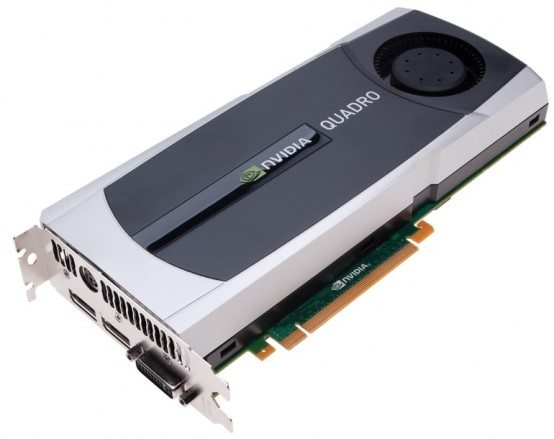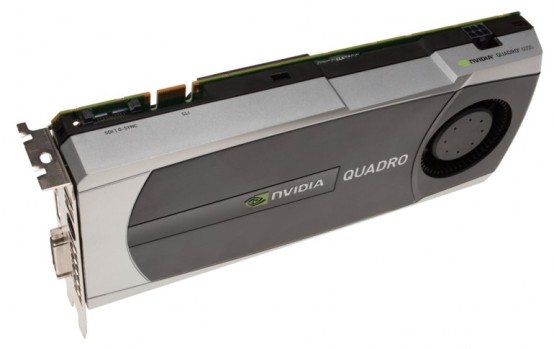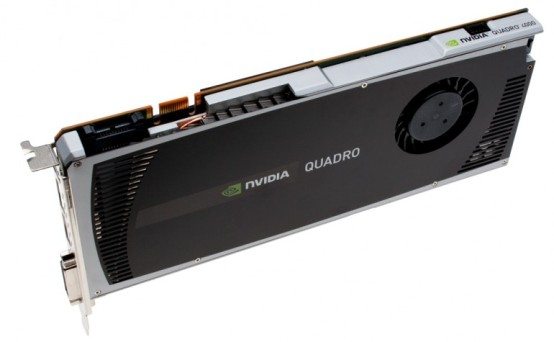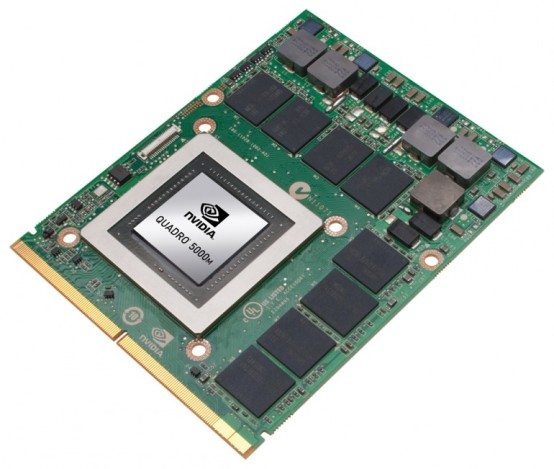NVIDIA has announced its new Fermi-based Quadro GPUs that will deliver performance that is up to five times faster for 3D applications and up to eight times faster for computational simulation.
 The Quadro Plex 7000 Array is a complete system solution capable of displaying up to 36 megapixels across eight displays, whereas the Quadro 6000, Quadro 5000 and Quadro 4000 GPUs are aimed at desktops and workstations. They are all compatible with NVIDIA’s new 3D Vision Pro active-shutter glasses solution, incorporate the new NVIDIA Scalable Geometry Engine and take advantage of NVIDIA Application Acceleration Engines (AXE).
The Quadro Plex 7000 Array is a complete system solution capable of displaying up to 36 megapixels across eight displays, whereas the Quadro 6000, Quadro 5000 and Quadro 4000 GPUs are aimed at desktops and workstations. They are all compatible with NVIDIA’s new 3D Vision Pro active-shutter glasses solution, incorporate the new NVIDIA Scalable Geometry Engine and take advantage of NVIDIA Application Acceleration Engines (AXE).
 The new Quadro GPUs are built on industry standards, including OpenGL 4.1, DirectX 11, DirectCompute and OpenCL. They also leverage technologies that are unique to NVIDIA, such as the company’s portfolio of Application Acceleration Engines (AXE) and NVIDIA CUDA parallel processing architecture. NVIDIA says this allows software developers to create and deliver the next-generation of professional applications that incorporate compute-intensive tasks, such as ray tracing, physics simulation, computational fluid dynamics and real-time video effects processing.
The new Quadro GPUs are built on industry standards, including OpenGL 4.1, DirectX 11, DirectCompute and OpenCL. They also leverage technologies that are unique to NVIDIA, such as the company’s portfolio of Application Acceleration Engines (AXE) and NVIDIA CUDA parallel processing architecture. NVIDIA says this allows software developers to create and deliver the next-generation of professional applications that incorporate compute-intensive tasks, such as ray tracing, physics simulation, computational fluid dynamics and real-time video effects processing.
 “NVIDIA isn’t just working on building better graphics hardware, but the software tools needed to drive the needed advancements that are now changing the industry,” said Rob Enderle, principal analyst, Enderle Group.
“NVIDIA isn’t just working on building better graphics hardware, but the software tools needed to drive the needed advancements that are now changing the industry,” said Rob Enderle, principal analyst, Enderle Group.
 The NVIDIA Quadro Plex 7000 array, and Quadro 6000, Quadro 5000 and Quadro 4000 GPUs feature the new NVIDIA Scalable Geometry Engines and leverage NVIDIA Application Acceleration Engines (AXE) which NIVIDIA says enables the world’s fastest performance across a broad range of CAD, DCC and visualization applications. The Quadro 6000 is rated at an impressive 1.3 billion triangles per second in raw performance, enabling users to interactively work with models and scenes that are five times more complex than previously possible.
The NVIDIA Quadro Plex 7000 array, and Quadro 6000, Quadro 5000 and Quadro 4000 GPUs feature the new NVIDIA Scalable Geometry Engines and leverage NVIDIA Application Acceleration Engines (AXE) which NIVIDIA says enables the world’s fastest performance across a broad range of CAD, DCC and visualization applications. The Quadro 6000 is rated at an impressive 1.3 billion triangles per second in raw performance, enabling users to interactively work with models and scenes that are five times more complex than previously possible.
In order to take advantage of NVIDIA’s 3D Vision Pro system, you will need the following. One of NVIDIA’s new Quadro GPUs, 3D Vision-Ready display or projector, 3D Vision Pro glasses and hub, Windows XP/Vista/7 or Linux (32-bit or 64-bit) and finally an application that supports Quad Buffered OpenGL stereo or NVIDIA Stereoscopic 3D driver. NVIDIA says this will allow users to create and display their work in true 3D.





